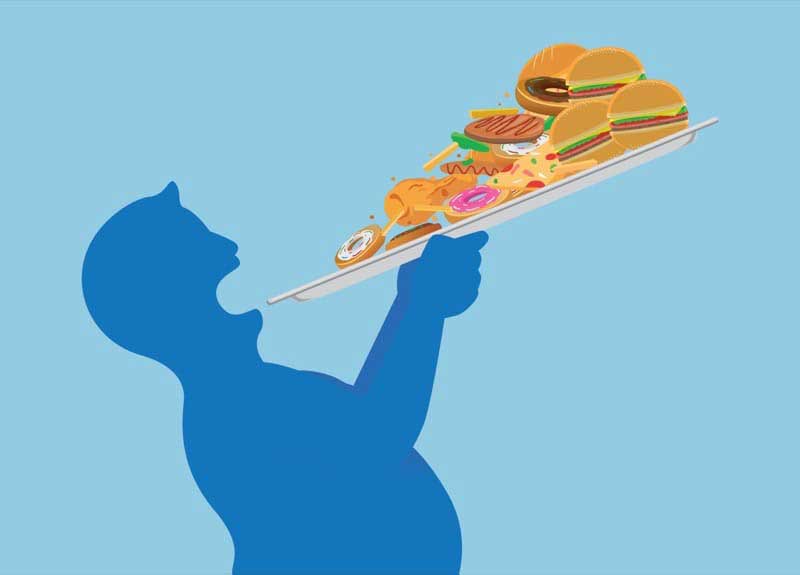Understanding Compulsive Overeating Disorder
What is Compulsive Overeating?
Compulsive overeating, also known as binge eating disorder, is a complex psychological condition characterized by recurring episodes of consuming excessive amounts of food. Individuals with this disorder often feel a lack of control during these episodes and experience distress afterward. Compulsive overeating is not simply a result of overindulgence or lack of willpower but is rooted in deeper psychological and physiological factors.Causes of Compulsive Overeating
Compulsive overeating can arise from a combination of emotional, biological, and environmental factors. Understanding these causes is crucial in developing effective treatment strategies.
Emotional Triggers
Many individuals turn to food as a way to cope with negative emotions such as stress, anxiety, depression, or loneliness. The act of eating temporarily provides comfort or distraction, which can create a cycle of emotional eating and reinforce the behavior.Biological Factors
Research suggests that certain biological factors can contribute to compulsive overeating disorder. Hormonal imbalances, abnormalities in brain chemistry, and genetic predisposition may all play a role in the development of this condition.Environmental Factors
The environment in which individuals live can also contribute to compulsive overeating. Factors such as easy access to high-calorie foods, societal pressure to maintain a certain body image, and a history of dieting or weight-related trauma can influence the development of this disorder.Signs and Symptoms
Recognizing the signs and symptoms of compulsive overeating is crucial for early intervention and support. Some common indicators include.Binge Eating Episodes
Individuals with compulsive overeating disorder often consume large amounts of food within a short period, feeling a loss of control during these episodes. They may eat rapidly, even to the point of discomfort, and continue eating despite physical fullness.Emotional Eating
Using food as a means to cope with emotions is a common characteristic of compulsive overeating. People may turn to food when feeling stressed, anxious, or sad, using it as a temporary escape.Weight Fluctuations
Compulsive overeating can lead to significant weight fluctuations. Individuals may experience periods of rapid weight gain followed by unsuccessful attempts at restrictive eating or dieting. This cycle of weight loss and regain can negatively impact both physical and emotional well-being.Health Consequences
Compulsive overeating disorder can have serious health consequences, affecting various aspects of an individual’s well-being.Obesity and Weight-related Issues
The excessive intake of calories during binge eating episodes often leads to obesity. Obesity, in turn, increases the risk of various health conditions such as diabetes, heart disease, high blood pressure, and joint problems. It also takes a toll on self-esteem and body image, further exacerbating the emotional impact of compulsive overeating.
Psychological Impact
Compulsive overeating can take a significant toll on an individual’s mental health. Feelings of guilt, shame, and low self-worth are common, leading to a negative cycle of emotional distress and further reliance on food as a coping mechanism. This can contribute to the development or worsening of conditions like anxiety and depression.Medical Complications
In addition to the psychological impact, compulsive overeating can lead to various medical complications. These may include gastrointestinal issues, sleep apnea, hormonal imbalances, and increased risk of certain cancers. The strain on the body’s organs and systems can have long-term detrimental effects.Diagnosis and Treatment
Diagnosing compulsive overeating disorder involves a comprehensive evaluation of an individual’s eating patterns, behaviors, and psychological well-being. Healthcare professionals use established diagnostic criteria, such as those outlined in the Diagnostic and Statistical Manual of Mental Disorders (DSM-5), to assess the presence of the disorder.Therapeutic Approaches
Treatment for compulsive overeating disorder typically involves a multi-faceted approach, addressing both the underlying psychological factors and the physical consequences. Some common therapeutic approaches include cognitive-behavioral therapy (CBT), dialectical behavior therapy (DBT), and interpersonal therapy (IPT). These therapies help individuals develop healthier coping mechanisms, manage emotions, and modify their relationship with food.Support and Self-help
Support groups and self-help strategies can be valuable tools in the treatment and management of compulsive overeating disorder. Connecting with others who have similar experiences can provide a sense of understanding and validation. Self-help techniques such as journaling, mindfulness, and building a support network of friends and family can also aid in the recovery process.Prevention and Coping Strategies
Preventing compulsive overeating disorder involves adopting healthy habits and developing effective coping strategies.
Building a Healthy Relationship with Food
Developing a healthy relationship with food is crucial in preventing and managing compulsive overeating. This includes mindful eating practices, understanding hunger and satiety cues, and seeking enjoyment from a balanced and nutritious diet. It’s important to view food as nourishment rather than a means of emotional escape.Seeking Professional Help
If you suspect you or someone you know may be struggling with compulsive overeating, seeking professional help is vital. A healthcare provider or therapist can provide a thorough evaluation, diagnosis, and recommend appropriate treatment options based on individual needs.Developing Coping Mechanisms
Learning healthy coping mechanisms for managing emotions is essential in overcoming compulsive overeating. Engaging in regular physical activity, practicing stress-management techniques such as meditation or deep breathing exercises, and seeking emotional support are all effective strategies for reducing the reliance on food as a coping mechanism.Discover the amazing features of Meta Quest 2
Conclusion
Compulsive overeating disorder is a complex condition that affects individuals physically, emotionally, and psychologically. Understanding the causes, symptoms, consequences, and treatment options can empower individuals to seek help and make positive changes in their lives. By fostering a healthy relationship with food, building effective coping strategies,and seeking professional support, individuals can overcome compulsive overeating and improve their overall well-being. It is important to remember that recovery is a journey and that each step towards a healthier relationship with food is significant.Can Compulsive Overeating Disorder Contribute to Under Eye Puffiness?
Can Compulsive Overeating Disorder contribute to the causes of under eye puffiness? This disorder, characterized by excessive food consumption and loss of control, may lead to weight gain and fluid retention. The resulting inflammation and swelling can manifest as puffiness under the eyes. Seeking professional help is important in managing this disorder and its potential impact on physical health.











